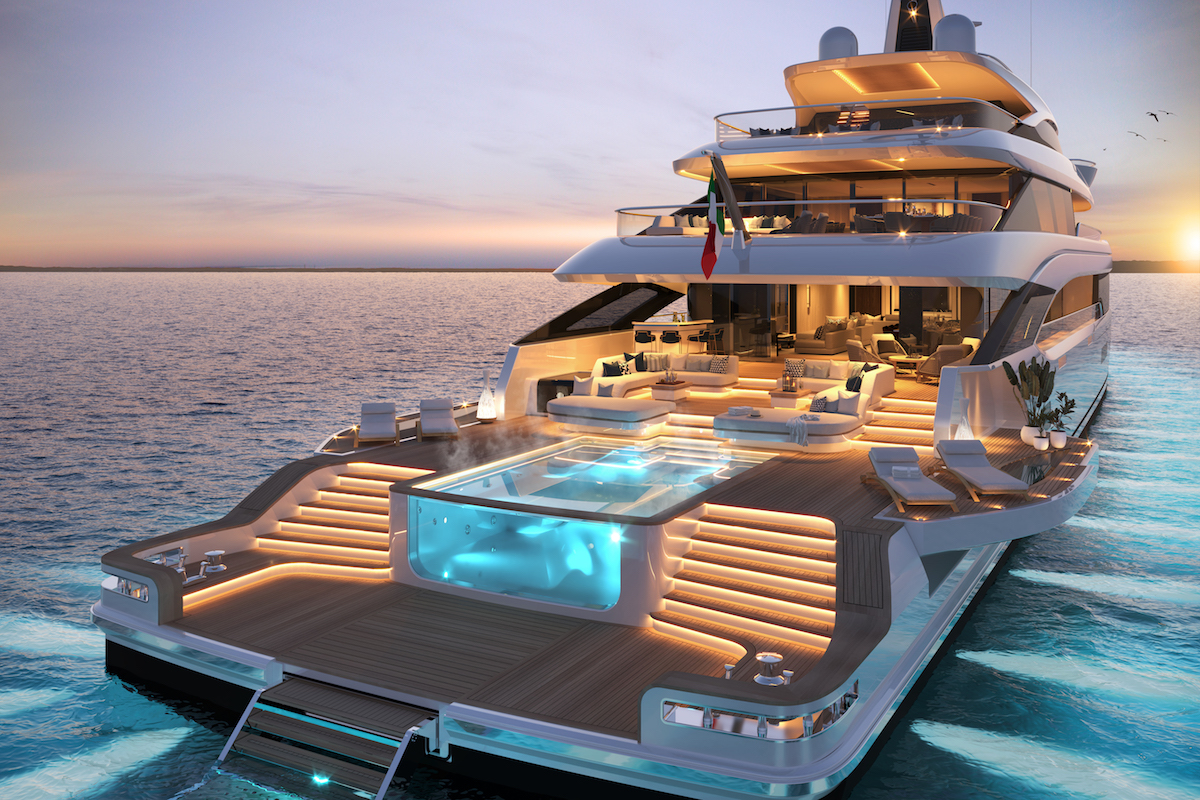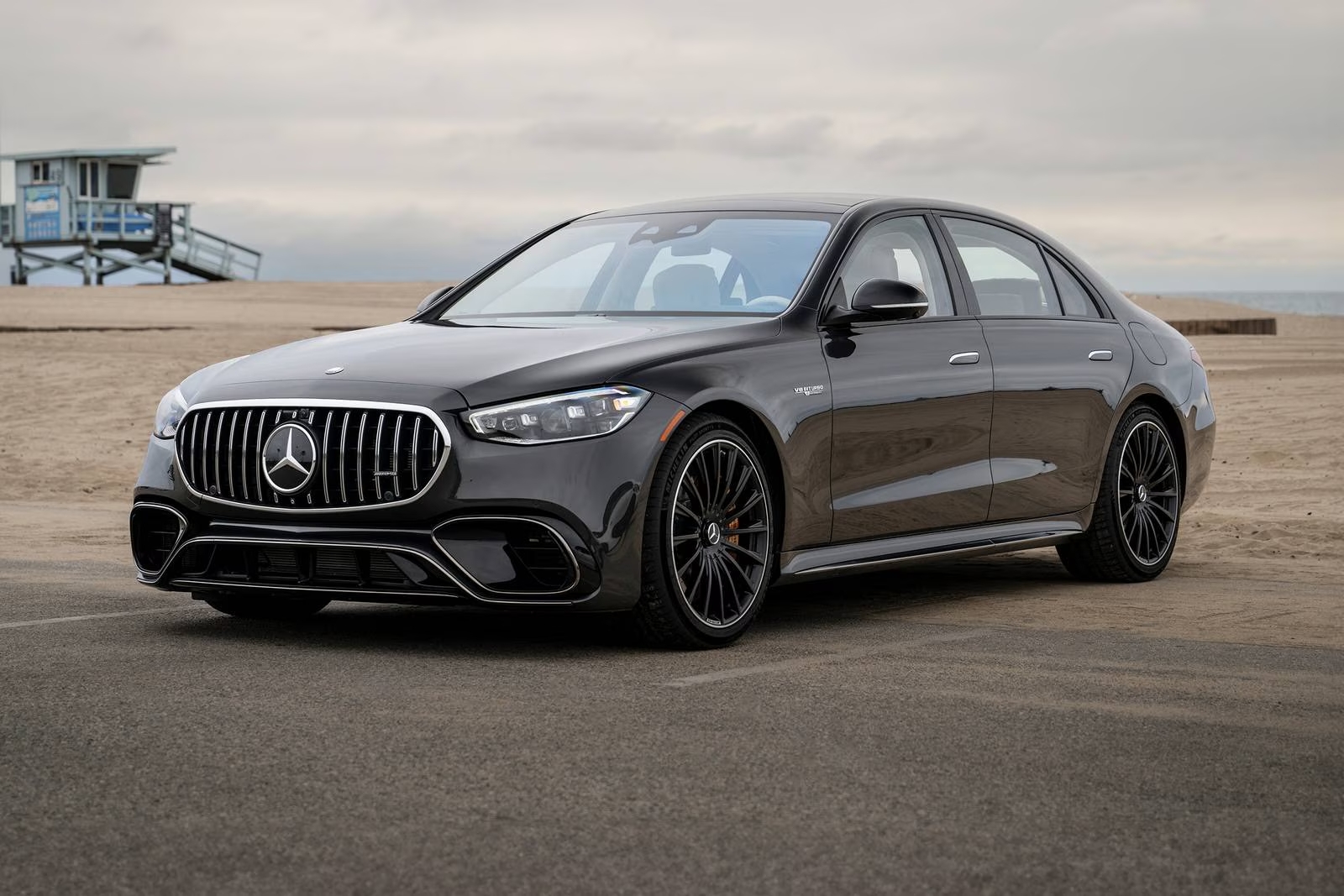The world of superyachts represents perhaps the ultimate expression of luxury—floating private estates that combine residential comfort, hospitality amenities, and maritime capability. At the million-dollar price point, we enter the realm of what industry insiders consider “entry-level” superyachts, typically ranging from 24-30 meters (78-100 feet) depending on age, builder reputation, and level of customization. This exploration takes you inside these exceptional vessels to understand what distinguishes them from ordinary watercraft and what prospective owners can expect from their investment.
Defining the Million-Dollar Segment
In the rapidly evolving superyacht market of 2025, one million dollars represents an important threshold. Below this price point, vessels tend to be production boats built in series with limited customization. Above this threshold, we begin to encounter genuine superyachts with bespoke elements, substantial interior volume, and the capability for extended autonomous cruising.
A million-dollar investment typically secures one of three options:
- A new-build yacht in the 24-27 meter range from a volume builder like Azimut, Princess, or Sunseeker
- A 5-10 year old 30-35 meter yacht from a premium European shipyard
- A recently refitted older yacht up to 40 meters with modernized systems
Each option offers different advantages in terms of warranty coverage, operating costs, interior volume, and potential for customization. Let’s explore what discerning owners can expect when stepping aboard these vessels.
Exterior Design and Engineering
Hull Architecture
Modern superyachts at this price point typically feature composite construction—combinations of fiberglass, carbon fiber, and lightweight core materials. Leading builders employ vacuum infusion techniques to optimize strength-to-weight ratios, crucial for performance and efficiency.
The prevailing design philosophy emphasizes expansive exterior spaces without sacrificing interior volume. This is achieved through innovative hull forms featuring:
- Plumb bows that maximize waterline length
- Wide beam carried forward for increased interior space
- Vertical sides to enhance stability and interior volume
- Integrated hull windows that transform previously solid surfaces into sources of natural light
Exterior Spaces
The outdoor areas of today’s million-dollar yachts reflect evolving lifestyle preferences, with multiple distinct zones for different activities:
The foredeck has evolved from a purely functional work area into a secondary social space with sunpads, often convertible into a dining or seating area. Advanced builders incorporate pop-up lighting, speakers, and even refrigeration to create a secluded retreat far from the main deck activity.
The flybridge—once a simple helm station with basic seating—now functions as an expansive outdoor entertainment area. Typical features include wet bars with refrigeration, dedicated dining areas, and substantial sunbathing spaces. Hard-top options with opening sections provide flexibility between sun protection and open-air cruising.
The aft deck serves as the primary outdoor dining area, usually accommodating 8-10 guests comfortably with direct access to the salon. Contemporary designs feature fold-down bulwarks or balconies that expand this space when anchored.
The beach club, once reserved for much larger yachts, now appears in creative forms even at this price point. Hydraulic swim platforms that extend the usable space and provide tender-launching capability represent the most common implementation.
Propulsion and Systems
Million-dollar yachts typically feature twin diesel engines from premium manufacturers like MAN, MTU, or Caterpillar, delivering cruising speeds around 20-24 knots with maximum speeds approaching 28-30 knots. The trend toward pod-drive systems (like Volvo Penta IPS) continues, offering improved efficiency, maneuverability, and interior space optimization through compact engine room arrangements.
Stabilization technology has become increasingly standard, with most vessels offering either traditional fin stabilizers or latest-generation gyroscopic systems from manufacturers like Seakeeper. These systems dramatically improve comfort both underway and at anchor by reducing roll by 70-90%.
Interior Design and Accommodation
Layout Philosophy
The typical million-dollar yacht follows a well-established arrangement with some contemporary innovations:
- Main deck featuring salon, dining area, and occasionally a forward owner’s suite
- Lower deck accommodating 3-4 guest cabins plus crew quarters
- Flybridge or sundeck providing additional outdoor entertainment space
What distinguishes current designs is the emphasis on flow between spaces and connection with the marine environment. Floor-to-ceiling windows, glass bulwarks, and expanded use of sliding doors create visual continuity between interior and exterior areas.
Material Selection
Interior finishes at this price point demonstrate considerable sophistication, though still reflecting some standardization compared to ultra-custom larger yachts:
Woods: European oak, American walnut, and bleached teak predominate, typically in matte finishes that emphasize natural grain patterns rather than the high-gloss lacquers of previous decades.
Stones: Engineered stone surfaces offer practical advantages for marine applications, though accent pieces in marble or onyx appear in key visual areas like bar countertops or bathroom vanities.
Metals: Architectural bronze, brushed nickel, and antiqued brass provide sophisticated accent elements, particularly in lighting fixtures, cabinet hardware, and bathroom fittings.
Fabrics: Performance materials that resist fading, water damage, and staining while maintaining luxurious hand-feel have revolutionized marine upholstery. Leading suppliers like Perennials and Sunbrella now offer textures and patterns indistinguishable from fine residential fabrics.
Owner’s Accommodation
The principal suite typically occupies 15-20% of the yacht’s interior volume, featuring:
- King-sized berth with under-bed storage and integrated lighting
- His-and-hers bathroom facilities (either separate rooms or shared space with dual fixtures)
- Walk-in wardrobe with climate control
- Dressing area with full-height mirror and excellent natural light
- Office space or private seating area
Contemporary designs emphasize dramatic hull windows that create a direct connection with the sea. Advanced sound insulation techniques—including floating floors, acoustic barriers, and vibration-damping materials—ensure these spaces remain quiet sanctuaries even when generators or air conditioning systems are operating.
Guest Accommodations
Million-dollar yachts typically offer three or four additional staterooms in varying configurations:
- VIP suite with queen berth and ensuite facilities
- Double guest cabin with versatile berth arrangements
- Twin cabin with single berths (occasionally convertible to doubles)
The best designs ensure each guest space enjoys natural light, adequate storage, and private bathroom facilities. Emerging trends include flexible cabin arrangements with convertible berths that transform from twin to double configurations to accommodate diverse guest groups.
Technical Systems and Capabilities
Power Management
Modern superyachts function as self-contained environments requiring sophisticated power management. Typical specifications include:
- 50-80kW generator capacity (often split between two units for redundancy)
- Shore power connections with isolation transformers
- Inverter systems for silent operation of essential systems overnight
- Emerging hybrid options utilizing lithium battery banks for “silent ship” mode
Smart power management systems automatically prioritize electrical loads, start/stop generators based on demand, and manage complex charging scenarios to extend equipment life while minimizing fuel consumption.
Climate Control
Marine air conditioning faces unique challenges including variable humidity, salt-laden air, and limited installation space. Million-dollar yachts typically feature:
- Chilled water air conditioning systems providing 12-16 BTU per square foot
- Independent temperature control in all cabins and social spaces
- Integrated dehumidification to prevent condensation and mold formation
- Heat recovery systems that capture waste heat for domestic hot water
Advanced systems incorporate air purification technologies addressing both particulates and VOCs—particularly valuable in marina environments where neighboring vessels may generate diesel exhaust.
Navigation and Communication
The modern superyacht bridge combines traditional maritime equipment with advanced digital integration:
- Multifunction glass bridge displays (typically Garmin, Raymarine, or Furuno)
- Radar systems with ARPA (Automatic Radar Plotting Aid) capability
- Electronic chart systems with worldwide coverage
- Autopilot with multiple operating modes
- Satellite communications providing voice and high-speed data
- AIS (Automatic Identification System) for vessel tracking
- CCTV systems covering blind spots and security-sensitive areas
Increasingly, these systems integrate with mobile applications allowing owners and captains to monitor vessel status, track position, and even adjust systems remotely.
Ownership Experience and Operating Considerations
Crew Requirements
A critical consideration often overlooked by first-time buyers is crew accommodation and staffing. Yachts in the million-dollar range typically require:
- Captain (either permanent or seasonal)
- Engineer/mate (possibly combined role)
- Stewardess/chef (possibly combined role)
Properly designed crew quarters enhance staff retention and service quality. At minimum, these spaces should include private cabins, dedicated bathroom facilities, and a small crew mess separate from guest areas.
Annual Operating Costs
Prospective owners should budget approximately 10-15% of the vessel’s value for annual operating expenses, including:
- Crew salaries and benefits ($150,000-250,000 annually for minimal crew)
- Insurance ($25,000-40,000 annually)
- Dockage ($40,000-80,000 depending on location)
- Maintenance ($50,000-100,000 for preventative maintenance)
- Fuel ($25,000-75,000 depending on cruising habits)
- Classifications and registrations ($10,000-20,000)
The most significant variable remains staffing—whether the vessel operates with full-time crew or seasonal staff dramatically impacts the budget.
Maintenance Considerations
Proper maintenance preserves both value and functionality. Essential programs include:
- Weekly systems operation even when not in use
- Monthly comprehensive checks of mechanical and electrical systems
- Annual haulout for underwater maintenance
- Five-year major service intervals for engines and generators
- Ten-year refit cycles for interior soft goods and electronics
Forward-thinking owners establish maintenance reserve funds from the outset, typically allocating 5% of vessel value annually toward future major refits.
The Charter Potential
Many owners offset operating costs through charter programs. Million-dollar yachts typically command weekly charter rates of $40,000-80,000 depending on:
- Destination
- Season
- Vessel age and condition
- Builder reputation
- Amenities package
Successful charter vessels require thoughtful design considerations:
- Flexible cabin arrangements accommodating different group compositions
- Robust entertainment systems
- Extensive water toy inventory
- Crew quarters adequate for charter operation (typically requiring additional staff)
While chartering rarely generates profit, well-managed programs can substantially reduce net ownership costs while maintaining the vessel to higher standards than purely private use might justify.
The Path to Ownership
The acquisition process for a million-dollar yacht typically follows these stages:
Initial Assessment
Determining specific requirements before shopping is crucial—preferences regarding:
- New vs. pre-owned
- Builder reputation priorities
- Cruising range requirements
- Accommodation needs
- Operating budget constraints
Broker Selection
Working with an experienced yacht broker—preferably one with MYBA (Mediterranean Yacht Brokers Association) credentials—provides valuable guidance throughout the process. The best brokers:
- Qualify suitable vessels against requirements
- Arrange efficient viewing schedules
- Negotiate offers and terms
- Coordinate survey and sea trial logistics
- Facilitate closing and delivery
Technical Evaluation
Pre-purchase surveys conducted by qualified marine surveyors typically cost $15,000-30,000 but provide essential verification of:
- Structural integrity
- Systems functionality
- Compliance with safety standards
- Fair market valuation
- Identification of near-term maintenance requirements
Ownership Structure
Tax and liability considerations often dictate establishing appropriate ownership structures, typically:
- Flag state selection (common choices include Marshall Islands, Malta, or Cayman Islands)
- Corporate ownership entity
- VAT and importation considerations for European cruising
- Insurance structure
Conclusion: Value Beyond Price
A million-dollar yacht represents not merely a luxury asset but access to experiences unavailable through other means. The ability to anchor in pristine coves inaccessible by land, to entertain in complete privacy regardless of location, and to change one’s environment at will represents the true return on investment.
The best approach combines passionate enthusiasm with clear-eyed business discipline. Understanding both the emotional rewards and financial obligations from the outset leads to sustainable ownership that maximizes enjoyment while minimizing surprises.
For those with the resources and inclination, yacht ownership at this level provides a unique combination of adventure, privacy, and the unmatched pleasure of connecting with the maritime environment in exceptional comfort. The million-dollar threshold provides entry into this world—one where engineering, craftsmanship, and design combine to create extraordinary floating environments limited only by imagination and budget.




